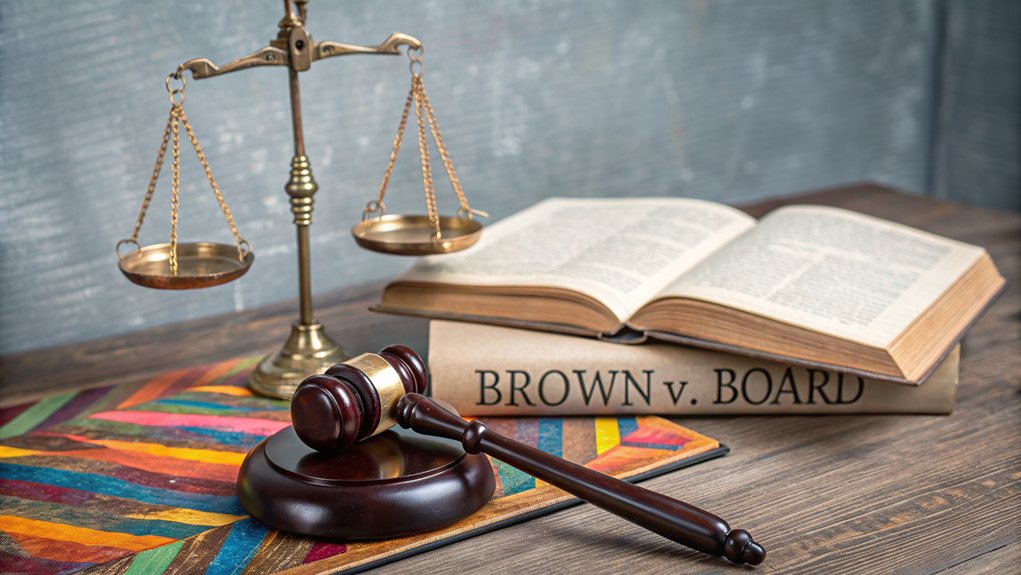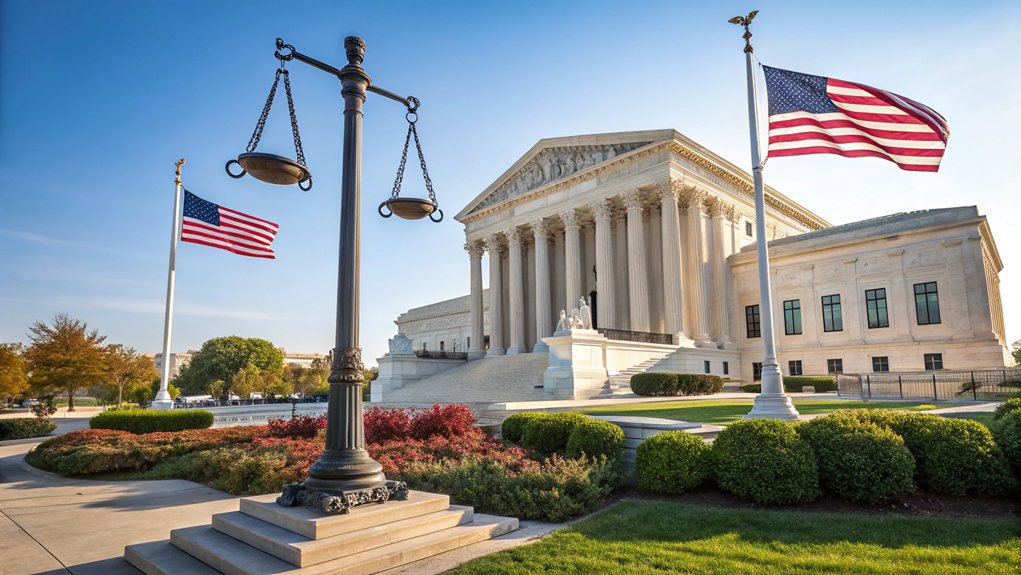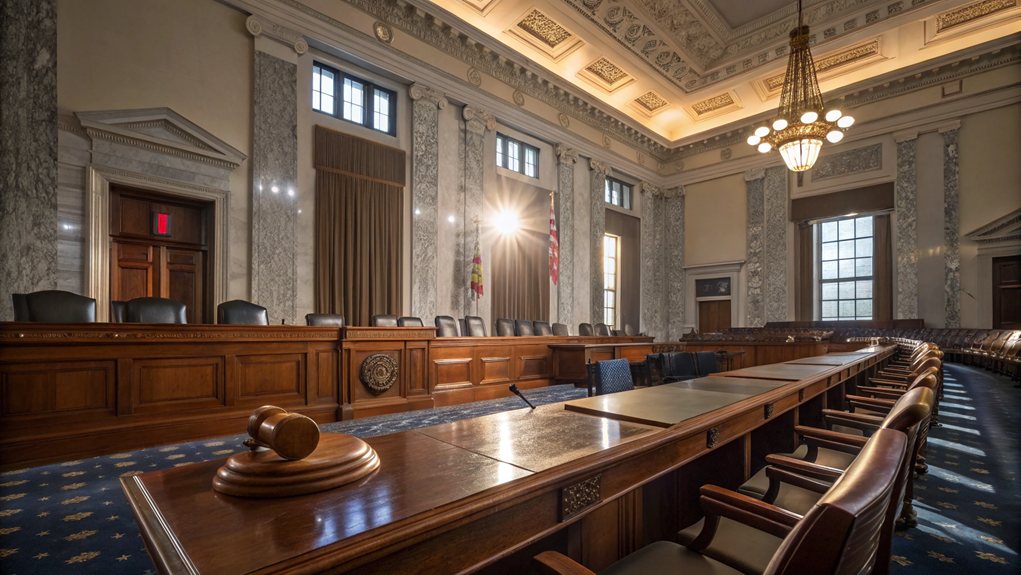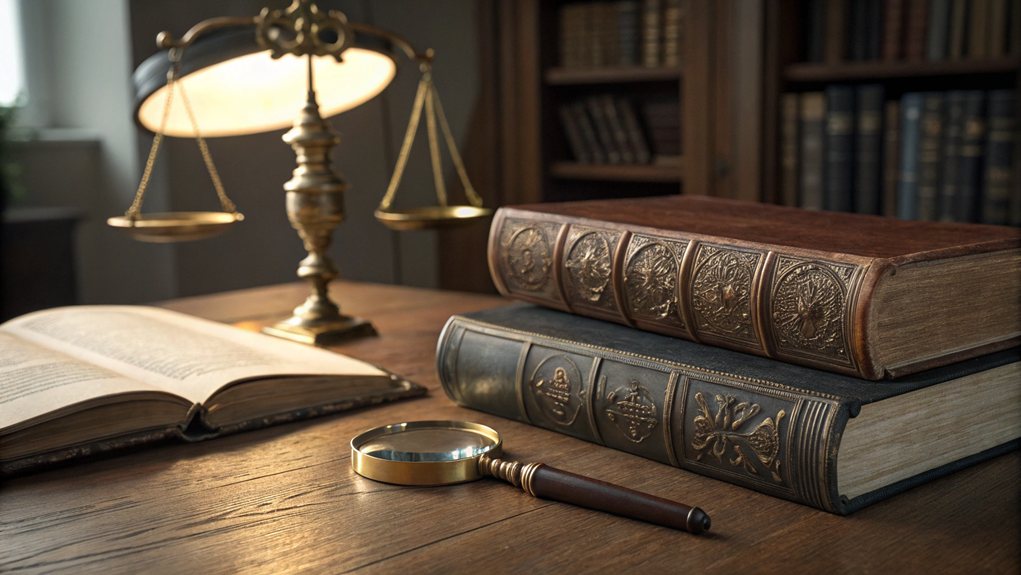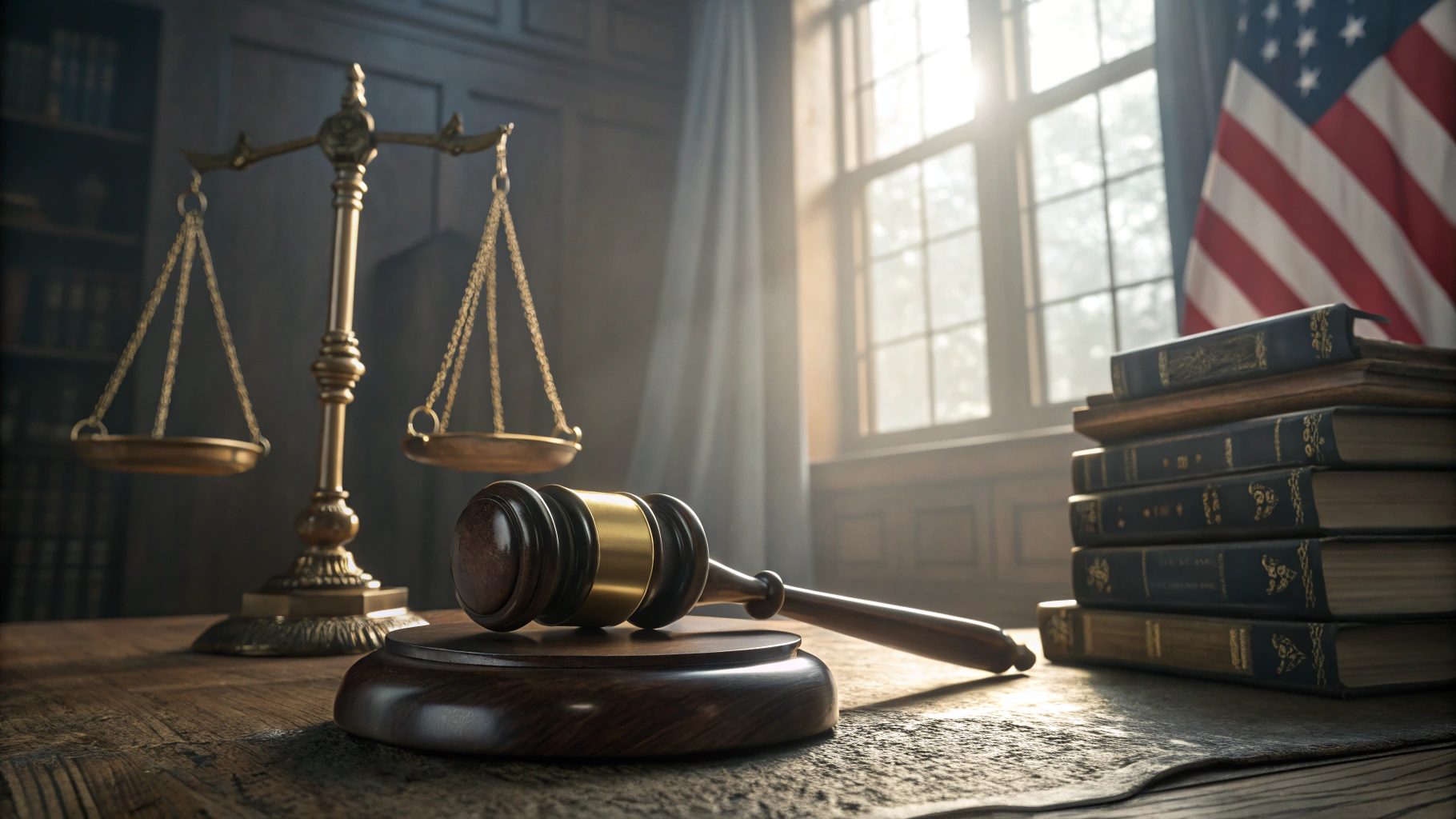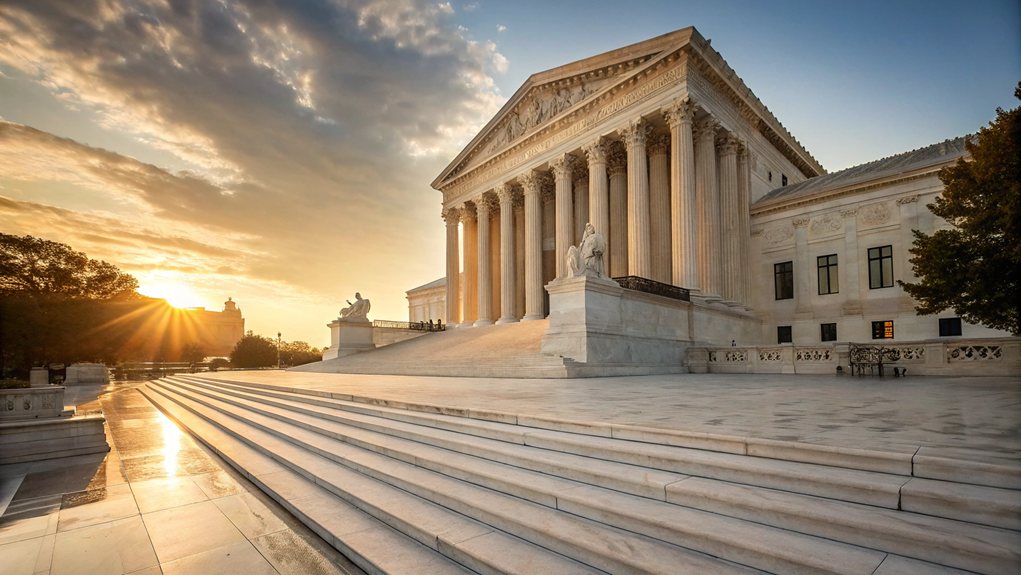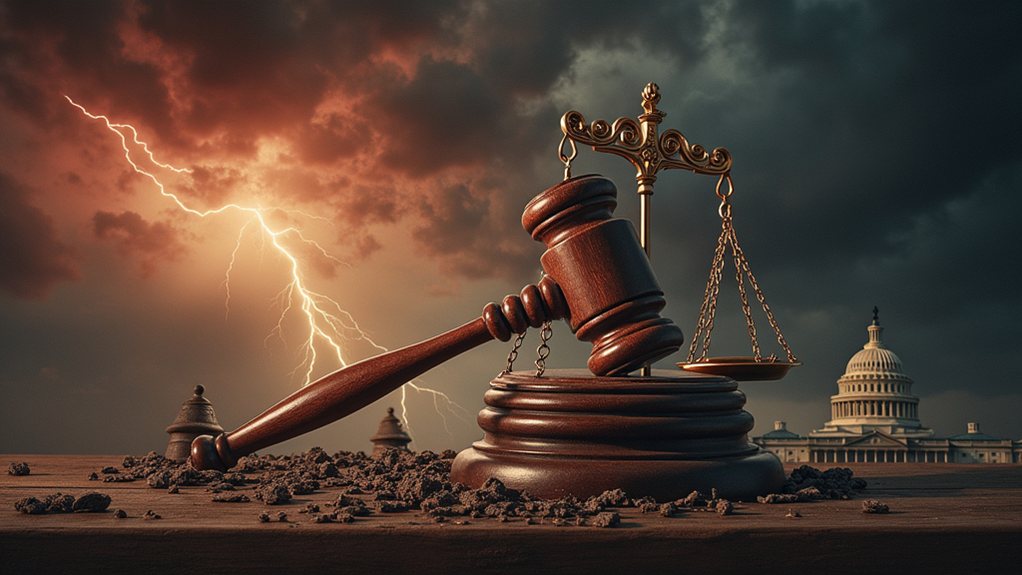Landmark Supreme Court cases, especially *Brown v. Board of Education*, are game-changers. They don't just sit in legal textbooks; they reshape society. This case kicked segregation to the curb, dismantling Jim Crow laws. It set the stage for civil rights advances. Legal precedents from such cases stick around, guiding future rulings. They reflect society's values and influence everyday life, challenging the status quo. There's a lot more at play here, so keep exploring for the full picture.
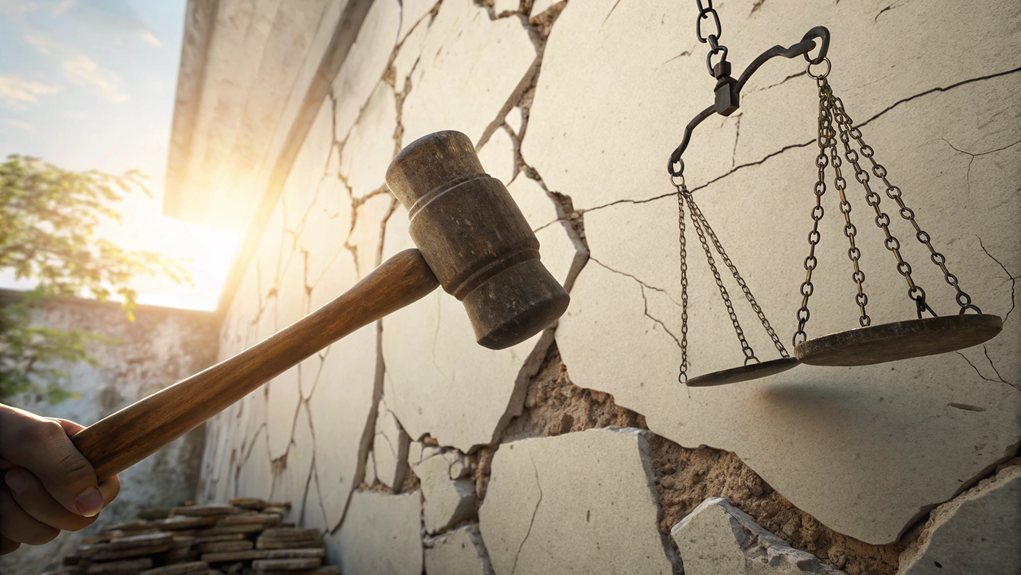
Landmark Supreme Court cases are the legal equivalent of a seismic shift—sometimes they shake the very foundations of society. Take *Brown v. Board of Education*, for instance. This 1954 decision didn't just shuffle the cards; it completely changed the deck. By declaring that racial segregation in public schools was unconstitutional, the Court didn't just make a ruling; it took a sledgehammer to the oppressive structure of Jim Crow laws. Talk about a game-changer.
These landmark cases, like *Marbury v. Madison*, set critical legal precedents. They guide future court decisions and shape how laws are interpreted. It's like having a cheat sheet for the judicial branch. Every time a new case pops up, judges refer back to these monumental decisions, thanks to the principle of *stare decisis*. It's a fancy way of saying, "We don't need to reinvent the wheel every time." Higher court decisions are binding and become part of the law, ensuring consistency in the legal system. Recent Supreme Court opinions continue to reference these historic decisions, highlighting their enduring significance.
Landmark cases like *Marbury v. Madison* are the cheat sheets of the judicial system, guiding future decisions with established precedents.
And let's not forget about individual rights. Landmark cases have been pivotal in advancing civil rights. *Tinker v. Des Moines* protected students' free speech, while *Griswold v. Connecticut* established the right to privacy. Without these rulings, who knows how many rights would still be up for grabs? The *14th Amendment* gets a workout, ensuring equal protection under the law. The Equal Protection Clause of the 14th Amendment has been particularly influential in dismantling discriminatory practices and extending civil rights to marginalized groups.
The influence of these cases seeps into everyday life—like a slow leak that eventually becomes a flood. Education, employment, and even criminal justice have all been shaped by these rulings. Want to know how evidence is handled in court? Look to *Mapp v. Ohio*.
In the end, landmark Supreme Court cases aren't just legal footnotes. They're powerful forces that reflect societal change and drive it forward. They challenge the status quo and spark public awareness.
Frequently Asked Questions
What Were the Main Arguments in Brown V. Board?
In *Brown v. Board*, the main arguments were pretty straightforward. Racial segregation? Yeah, that violated the Equal Protection Clause of the 14th Amendment.
They argued that separate schools were never equal; it's like saying a cheap motel is the same as a five-star hotel. The case slapped down the "separate but equal" nonsense from *Plessy v. Ferguson*.
Thanks to the NAACP, it was a game-changer for civil rights and education.
How Did Brown V. Board Impact Future Legislation?
Brown v. Board didn't just sit there collecting dust. It flipped the script on segregation and shouted, "Enough is enough!"
This landmark ruling kicked off a wave of civil rights legislation. Schools had to desegregate, and suddenly, the Equal Protection Clause was all the rage.
Sure, there was pushback, especially in the South, but it laid the groundwork for future laws tackling racial discrimination.
Talk about a game changer in American history!
Who Were the Key Figures in the Brown V. Board Case?
The key figures in Brown v. Board were a colorful bunch.
Oliver Brown? He was the dad who kicked off the lawsuit. His daughter, Linda, was the reason they even bothered.
The NAACP brought the legal muscle, with Thurgood Marshall leading the charge. You had other families from various states joining in.
On the flip side, there were lawyers like Harold Fatzer arguing against progress. Quite the showdown, really. History was made!
What Was the Public Reaction to the Brown V. Board Ruling?
The public reaction to the Brown v. Board ruling was a mixed bag. Some cheered, celebrating what felt like a giant leap toward equality.
Others? Not so much. Southern states dug in their heels, opting for "Massive Resistance" instead of compliance. Schools shut down, and legal battles erupted.
Newspapers were buzzing with opinions, reflecting the chaos. It was a pivotal moment, full of hope for some and outright anger for others. Quite the spectacle!
How Does Brown V. Board Relate to Current Civil Rights Issues?
Brown v. Board isn't just some dusty old case; it's a blueprint for today's civil rights battles.
Sure, schools are technically desegregated, but de facto segregation still runs rampant. The struggles for equitable access and diverse teachers? Still very real.
And let's not forget the ongoing fight against systemic inequality in education.
